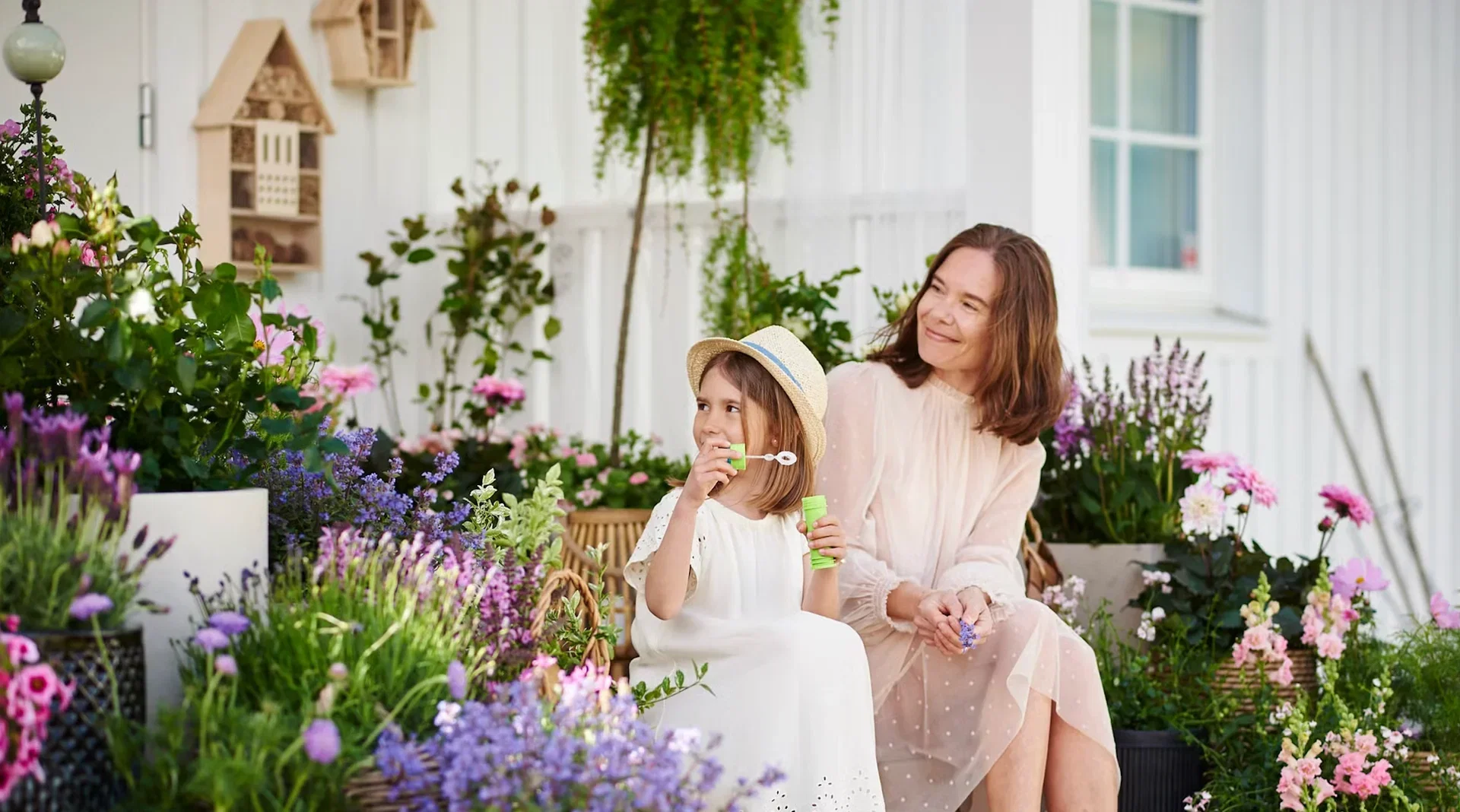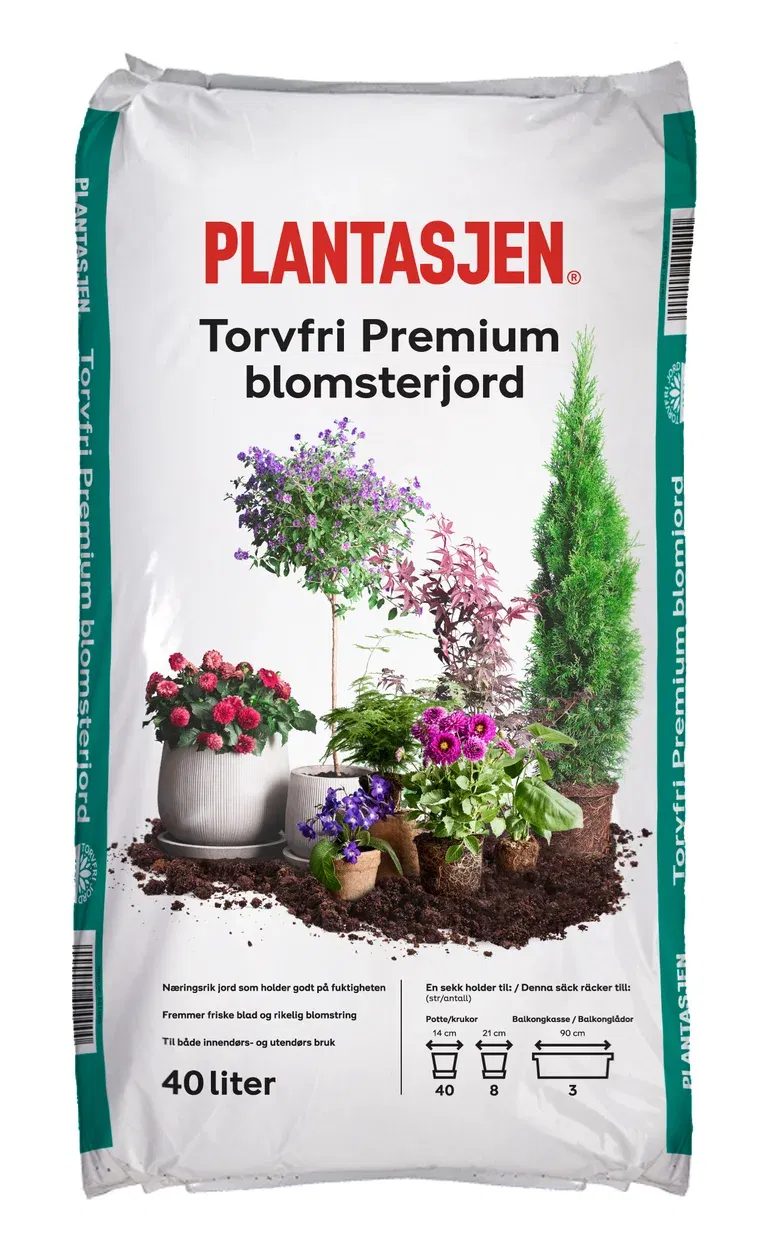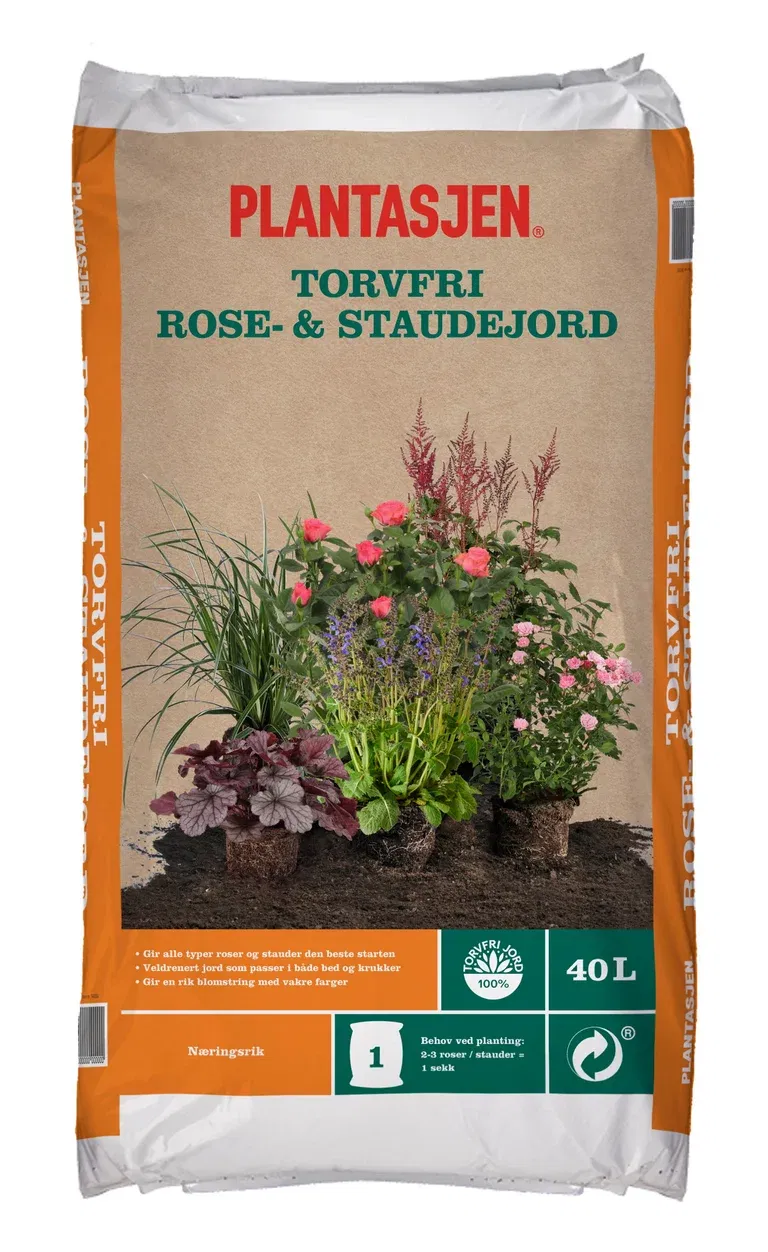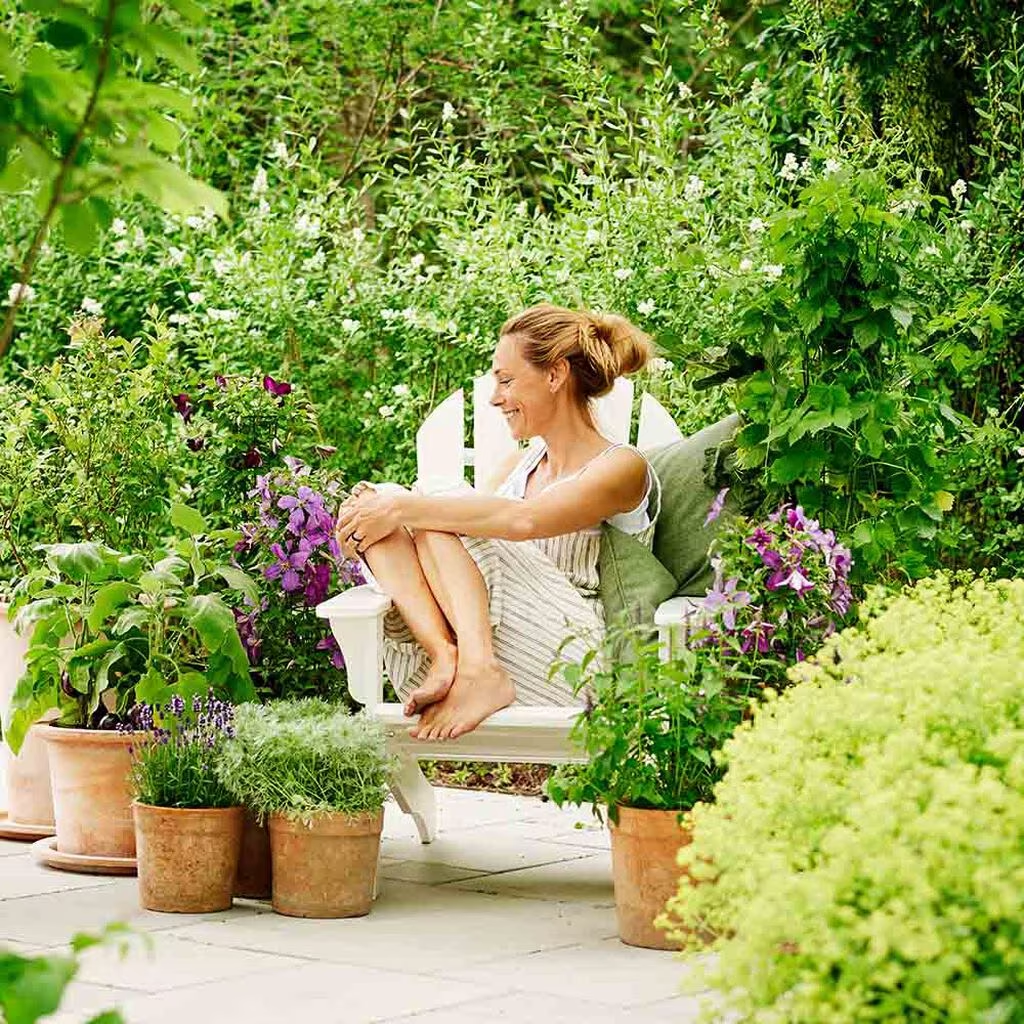How to make climate-smart choices for your outdoor space this summer
1 in 4 Norwegians plan to grow climate-friendly flowers and plants this summer. Here are some tips for those who want to take care of the environment while also having a beautiful outdoor space to enjoy throughout the summer season.

In our report "Plant Trends 2021," conducted by HUI Research, it is revealed that 1 in 4 Norwegians are keeping biodiversity in mind when growing plants and flowers this year. The youngest generation is the most focused on this, with a 36 percent response rate among those aged 18-29.
– It’s great to see that more and more people want to make environmentally conscious choices for growing, outdoor spaces, and gardens. One of the most important actions we can take is to care for bumblebees, bees, butterflies, flies, and beetles, and we can do this by growing a variety of different plants and flowers. Different insects like different things, says Hans Jensen, gardener at Plantasjen.
Our report shows that 1 in 3 Norwegians grow bee-friendly plants, and many take concrete steps to help the bees, such as creating a flower meadow or a bee hotel.
– Every single effort to help pollinators and other insects is important. Not least, city bees need help with habitat. Build homes for the bees, for example, by drilling holes in pieces of wood. Each individual consumer can do a lot to create an environment that attracts the most important pollinators, thereby creating a sustainable garden, balcony, or outdoor space that is buzzing with life, says Jensen.
How to help pollinators
- Grow diversely. The more varieties of flowers in different colors and shapes, the better. Plant both deep and shorter flowers, and preferably old-fashioned untreated varieties that smell. Avoid double, treated flowers – most insects have difficulty accessing them. Examples of flowers include nasturtium, corn poppy, sunflower, marigold, or perennials like peonies and catnip.
- Grow organically and avoid using plant pesticides. They can damage insects' reproductive ability or their ability to navigate.
- Provide water in a drowning-safe tray (e.g., with gravel). Place it near the flowerbeds.
- Provide insect homes and places where insects can lay eggs; you can either build these yourself or buy ready-made ones. A corner with weeds, a pile of sand, an old tree, or a pile of old branches also makes great homes.
- Ensure there are flowering plants from early spring to late autumn. In the spring, for example, crocuses and bulb plants, and in the autumn, buttercup, asters, and verbena bonariensis.
- Turn off the lights. Many nocturnal insects fly around until they collapse in the night lighting.
Create a flower meadow that pollinators love
Jensen explains that another great tip to help pollinators is to create a flower meadow. It doesn't need to be extensive—just set aside a small corner of the garden. One key requirement for creating a flower meadow is nutrient-poor soil.
– It might seem strange to use poor soil, as we often hear that nutrients are good for plants, but in this case, it's the opposite. A meadow should never be fertilized and should be created on unfertilized ground, says Jensen.
To make sowing easier, you can choose a ready-made seed mix. These contain a blend of flowers and grasses. If you want the meadow to establish quickly, you can also plant mature plants. Feel free to mix perennials with annual flowers. Perennials can form a solid base, but while waiting for them to grow, annuals like cornflowers and poppies can provide a delightful bloom.
Tips for a lush flower meadow
- Make sure the lawn is poor and well-drained.
- Remove weeds that compete with the meadow flowers.
- Choose a sunny spot. There are also seed mixes for shade, but in general, sunlight is better—most pollinators also thrive in the sun.
- Keep the newly sown area moist and remove any plant material in the fall once the plants have finished shedding their seeds. You can mow it with a sharp scythe for the best result.
- Ready plants give the quickest results, but you can also sow seeds. A tablespoon of seeds per square meter is enough.
Choose peat-free and natural soil.
Another climate-smart measure is to buy peat-free soil. Peat bogs are excellent carbon stores, but this relies on them being left undisturbed. Vibeke Næss, press contact at Plantasjen, explains that in 2017, Plantasjen tasked its supplier, Nordic Garden, with developing peat-free soil using only Norwegian raw materials. They have succeeded, and the new peat-free soil is made from Norwegian wood fibers and compost.
– Plantasjen's goal is to leave as small a footprint as possible and take care of the environment. In addition to reducing peat in soil, we are working with other suppliers of dry goods and plants to reduce peat usage, says Næss.
Grow edible plants
The trend of growing edible plants is still strong. One in three Norwegians has said they will grow edible plants this summer, according to Plantasjen's report. Thirty percent say they grow edible plants because they are organic and locally sourced.
– The best part is that you don’t need a garden to have an outdoor space full of herbs, spices, and vegetables. Even on the smallest balconies, or even in the kitchen window, edible plants can be grown throughout the summer – so you’ll always have fresh additions to your summer meals. It's inexpensive and sustainable, concludes Hans Jensen.
Read more:
You are here:











